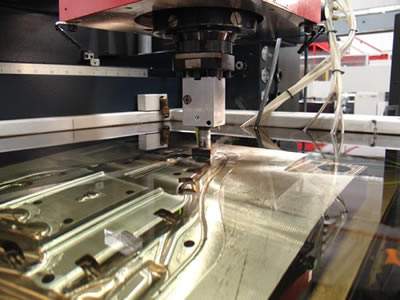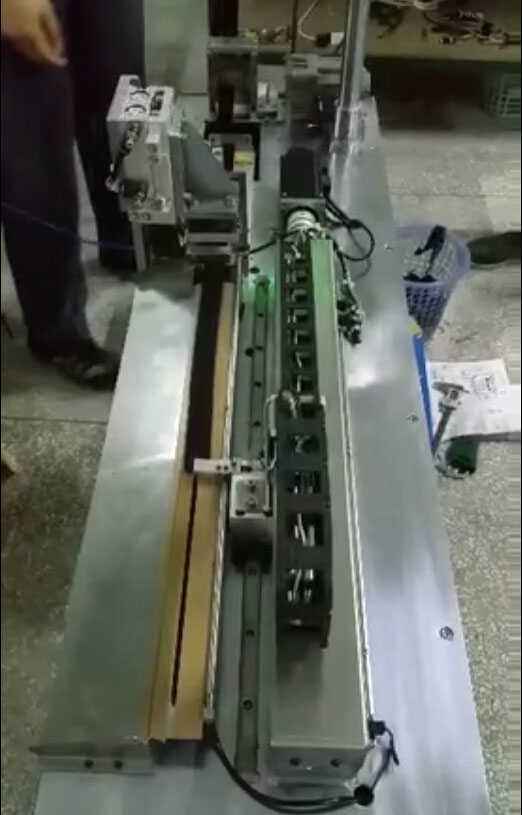- All
- Product Name
- Product Keyword
- Product Model
- Product Summary
- Product Description
- Multi Field Search
Views: 31 Author: Site Editor Publish Time: 2019-09-11 Origin: Site
Composite machining refers to the combination of two or more different types of energy at the same time on the processing site to process the workpiece materials. If one of the processing methods is ultrasonic processing, it is called ultrasonic composite processing. At present, the most widely used are ultrasonic EDM and ultrasonic electrochemical machining.
1. Ultrasonic-EDM Composite Machining
电极和工件接入直流(脉冲) 电压,以一定微压力接触,之间加入含微细磨粒的具有绝缘性能的工作介质(如:无水乙醇) ,工具电极引入超声频振动,将产生脉冲性火花放电。电极与工件间存在最小间隙△min ,约为单个磨粒直径,由于最小间隙的作用,可有效避免放电短路。当电极与工件之间的间隙小于△max 时,产生微细电火花放电加工。在火花放电的间隙,超声的空化和泵吸作用,可有效、及时去除电蚀物,加速工作液循环,改善间隙放电条件,从而有效避免电弧放电,提高有效脉冲比例,改善加工精度和表面质量。此工艺适用于硬韧金属材料微结构加工。采用高频脉冲电源,放电频率下降,超声作用效果更明显,更有利于提高加工精度与表面质量,但效率有所下降。
The electrode and workpiece are connected to DC (pulse) voltage, contacted with a certain micro-pressure, and the insulating working medium (e.g. absolute ethanol) containing micro-abrasive particles is added between them. The tool electrode is vibrated by ultrasonic frequency, which will generate pulsed spark discharge. There is a minimum gap △min between the electrode and the workpiece, which is about the diameter of a single abrasive particle. Because of the role of the minimum gap, short circuit discharge can be effectively avoided. When the gap between the electrode and the workpiece is less than Delta △max, micro-EDM is produced. In the gap of spark discharge, ultrasonic cavitation and pumping can effectively and timely remove electrolyte, accelerate working fluid circulation and improve the condition of gap discharge, so as to effectively avoid arc discharge, improve the effective pulse ratio, improve the processing accuracy and surface quality. This process is suitable for micro-structure processing of hard and tough metal materials. Using high frequency pulse power supply, the discharge frequency decreases, and the effect of ultrasonic is more obvious, which is more conducive to improving the processing accuracy and surface quality, but the efficiency decreases.

2. Ultrasonic-Electrolysis Compound Machining
超声电解复合微细加工原理,加工过程中,采用低电压(1~5 V) 、低浓度钝化电解液(如5 %NaNO3 水溶液) ,由于微电流电解作用,在工件表面会产生厚度极薄、强度远低于基体材料的电解钝化膜,它可阻止低电流密度电解作用。
Ultrasonic electrolysis combined with microfabrication principle. Low voltage (1-5 V), low concentration passivation electrolyte (such as 5% NaNO3 aqueous solution), due to microcurrent electrolysis, electrolytic passivation film with very thin thickness and much lower strength on the workpiece surface can be produced, which can prevent low current density electrolysis. A kind of
引入超声频振动、脉冲电流后,磨粒的冲击刮擦、高频振动冲击波及“负压空化”作用能有效消除钝化膜,并及时排除间隙区的电解产物,改善及加强电解作用,使加工过程得以持续。
After introducing ultrasonic frequency vibration and pulse current, the impact scraping, high frequency vibration shock wave and negative pressure cavitation of abrasive particles can effectively eliminate passive film, eliminate electrolytic products in gap area in time, improve and strengthen electrolysis, and make the processing process sustainable.

1. Deep Small Hole Processing
众所周知,在相同的要求及加工条件下,加工孔比加工轴要复杂得多。一般来说,孔加工工具的长度总是大于孔的直径,在切削力的作用下易产生变形,从而影响加工质量和加工效率。特别是对难加工材料的深孔钻削来说,会出现很多问题。例如,切削液很难进入切削区,造成切削温度高;刀刃磨损快,产生积屑瘤,使排屑困难,切削力增大等。其结果是加工效率、精度降低,表面粗糙度值增加,工具寿命短。采用超声加工则可有效解决上述问题。
As we all know, under the same requirements and processing conditions, the processing hole is much more complex than the processing axis. Generally speaking, the length of the hole processing tool is always larger than the diameter of the hole, which is prone to deformation under the action of cutting force, thus affecting the processing quality and efficiency. Especially for deep hole drilling of difficult-to-machine materials, there will be many problems. For example, it is difficult for cutting fluid to enter the cutting zone, resulting in high cutting temperature; the cutting edge wears fast, resulting in chip accumulation tumors, making chip removal difficult, cutting force increases, etc. As a result, the processing efficiency and accuracy are reduced, the surface roughness value is increased, and the tool life is short. Ultrasonic processing can effectively solve the above problems.
A new 4-axis EDM device combining ultrasonic and EDM was developed by introducing ultrasonic vibration into precision EDM of Ti alloy deep holes. The effect of ultrasonic vibration on EDM process was studied. The experimental results show that the device can process deep holes with a depth-diameter ratio of <0.2 mm and <15 on Ti alloy.
2. Grinding and Polishing of Drawing Die and Cavity Die
聚晶金刚石拉丝模超声研磨抛光技术在国内外已获得广泛应用,新的超声研磨抛光方法和设备已出现。北京市电加工研究所提出的“超硬工具材料电火花超声波复合抛光方法”,其特点是:采用超声频信号调制高频电火花脉冲电源与超声加工复合进行聚晶金刚石拉丝模研磨抛光。该技术已获得国家专利,并在生产中获得应用。
Ultrasonic polishing technology of polycrystalline diamond drawing dies has been widely used at home and abroad, and new methods and equipment of Ultrasonic polishing have emerged. Beijing Institute of Electrical Machining (BEM) has put forward the method of EDM-ultrasonic composite polishing for superhard tool materials, which is characterized by the combination of ultrasonic frequency signal modulation high frequency EDM pulse power supply and ultrasonic machining for grinding and polishing of polycrystalline diamond drawing dies. The technology has been patented and applied in production.
3. Ultrasonic Machining of Difficult-to-Machining Materials
金属和非金属硬脆材料的使用越来越广泛,尤其是陶瓷材料,具有高硬度、耐磨损、耐高温、化学稳定性好、不易氧化、腐蚀等优点。然而,由于工程陶瓷等难加工材料具有极高的硬度和脆性,其成形加工十分困难,特别是成形孔的加工尤为困难,严重阻碍了应用推广。
Hard and brittle metal and non-metal materials are used more and more widely, especially ceramics, which have the advantages of high hardness, wear resistance, high temperature resistance, good chemical stability, non-oxidation and corrosion resistance. However, due to the extremely high hardness and brittleness of difficult-to-machine materials such as engineering ceramics, it is very difficult to form, especially the processing of forming holes, which seriously hinders the application and promotion. A kind of
但是,将超声振动引入普通聚晶金刚石(PCD)的研磨加工,显著地提高了研磨效率,并在分析PCD材料的微观结构和去除机理的基础上,对PCD超声振动研磨机
However, the introduction of ultrasonic vibration into the lapping of ordinary polycrystalline diamond (PCD) significantly improves the lapping efficiency. Based on the analysis of the microstructure and removal mechanism of PCD materials, the PCD ultrasonic vibration lapping machine is developed.
Ms. Yvonne
sales@xingultrasonic.com
0086-15658151051
Room 1103B, Nature business building , NO.1160 GongWang Road ,FuYang, Hangzhou,Zhejiang,China